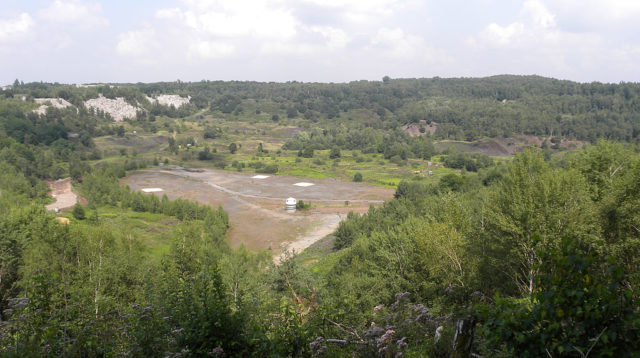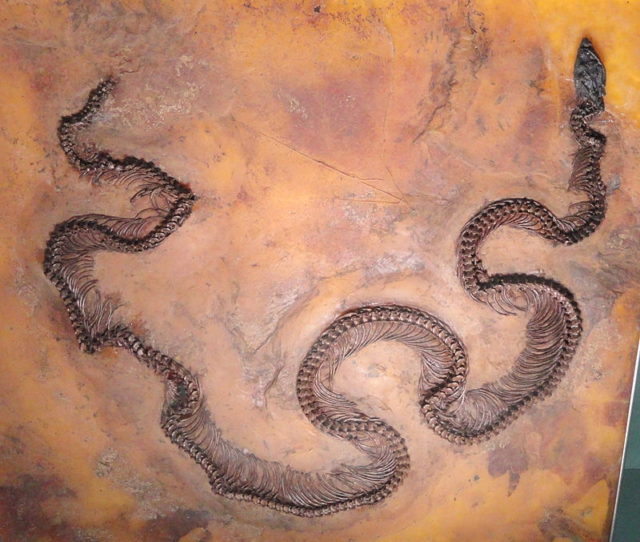About 48 million years ago, a snake died in a volcanic lake only a couple of days after having eaten a lizard. This lizard had itself just consumed a beetle, which remained in its stomach, and through the process of fossilization, this ancient food chain has stayed intact for millions of years.
This incomparable fossil was discovered by researchers working at the Messel Pit close to Frankfurt. “In the year 2009, we were able to recover a plate from the pit that shows an almost fully preserved snake,” said Dr. Krister Smith from the Department for Messel Research.
“And as if this was not enough, we recovered a fossilized lizard within the snake, which in turn contained a fossilized beetle in its innards!”

It’s highly uncommon to find food chains preserved, but due to the superior level of preservation at the Messel fossil location, many great finds have been unearthed.
Grapes and leaves from the stomach of a prehistoric horse, pollen grains inside a bird’s intestinal tract, and the remains of insects in fossilized fish excrement have all been found there by a group from the Senckenberg Research Institute in Frankfurt.
“However, until now, we had never found a tripartite food chain – this is a first for Messel.”

The snake is 103 centimeters (3.4 ft) long, much smaller than other samples of this class, which usually reaches two meters (6.6 ft) or more. It was said to be the juvenile relative of the modern Boa.
The lizard was 20 centimeters from the tip of its tail to the head, and was found within several of the snake’s ribs, which clearly signals that the lizard was inside the snake at the time of its death.
Utilizing a high-resolution computer display, Dr. Smith and his coworker, Agustin Scanferla, identified the classes of both the lizard and the snake.
The tiny beetle found inside the lizard offers insight into their feeding practices. The stomachs of other lizards discovered here contained only the remnants of plants, so this is very strong evidence of their supposed omnivorous diet.
It’s amazing when something like this stays so well preserved. Without fossils like this, we would have so many more mysteries to solve.
